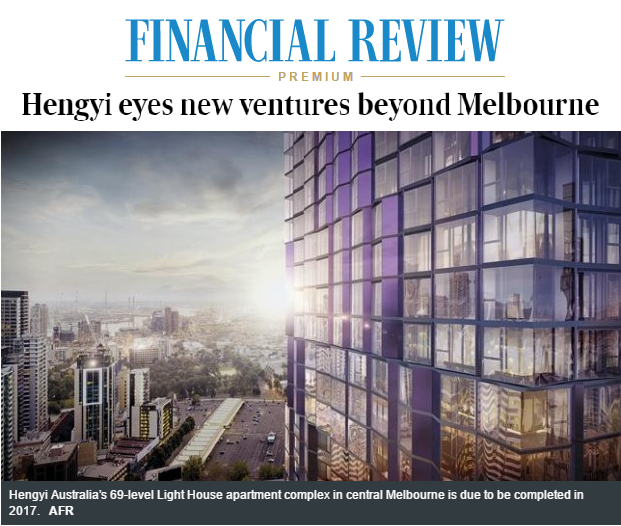Chinese-backed developer Hengyi Australia is looking beyond Melbourne for fresh investment opportunities, after selling $240 million worth of apartments in its latest high-rise development overlooking Queen Victoria Market.
Hengyi Australia head of marketing and development Stephen Speer told The Australian Financial Review the company was “actively looking for opportunities” and was currently considering a number of joint ventures both in Melbourne and around Australia.
Light House, is a 69-level high-rise apartment development on the corner of Elizabeth Street and Franklin Street in central Melbourne with an end value of $320 million. It is due for completion in early 2017.
The project is a joint venture between Hengyi and Melbourne GP-turned-developer Harold Chua.
Dr Chua acquired what is currently the Melbourne International Backpackers – a four-storey building on a 1009 square metre site – for $3.8 million in 2000 through his property investment business, Sixth Grange.
The existing backpackers will be demolished in October, with construction to begin next year.
Light House has been designed by architects Elenberg Fraser featuring an exterior luminescent shell of reflective panels.
It’s the second Australian project for Hengyi, an affiliate of China’s Shandong HYI Group, a large-scale residential and commercial developer based in the Shandong province.
Hengyi’s other Melbourne project – its first in Australia – is the 23-level residential conversion The William. Due for completion in September, it will feature residences plus a serviced apartment component run by US hotel group Wyndham.
Light House features 607 units of which 75 per cent have already been sold. The contracts are worth $240 million on settlement.
Mr Speer said 120 apartments were sold following investor roadshows in Hong Kong, Singapore and Kuala Lumpur. A further batch was sold through agents in Shanghai.
There was no restriction on the number that could be sold overseas, with as many as 40 per cent potentially owned by offshore investors, Mr Speer said.
